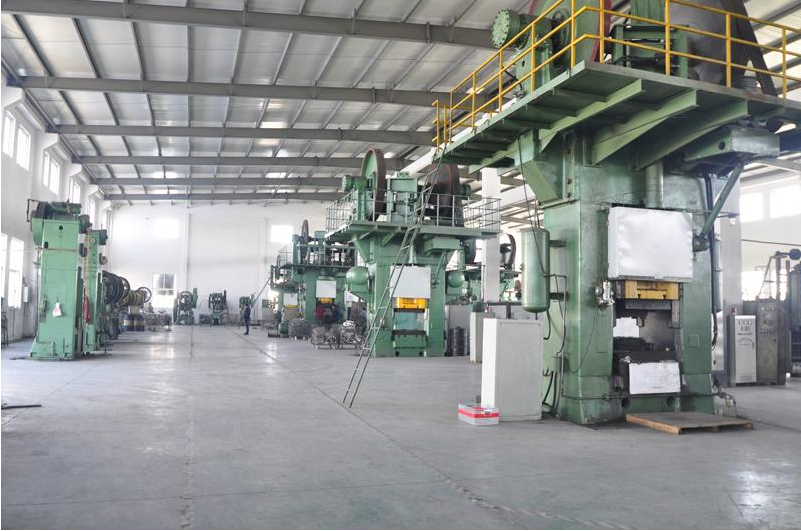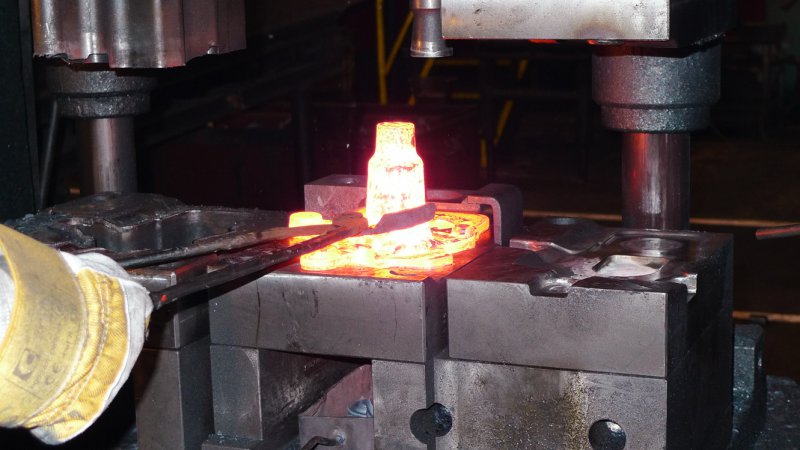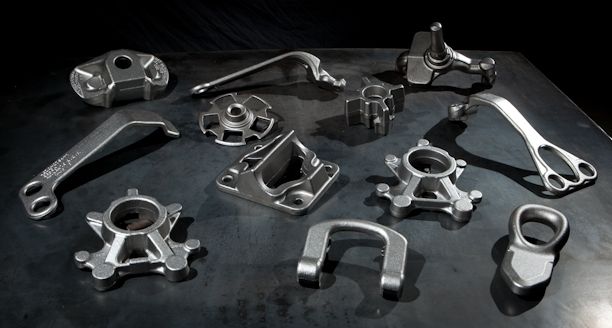Steel Forging is a drop forging process which involves the use of hammering or pressing techniques to alter the steel’s shape, maybe followed by heat treatment. This method produces in the steel a number of properties which distinguish it from other treatments of this metal, for example casting, where liquid metal is poured into a mold and then left to solidify.
Materials of Steel Forgings
Stainless Steel (SS303, SS304, SS316, ect): Stainless steel forgings are composed of a ferrous alloy characterized by a “stainless” quality brought about by its protective oxide layer that helps the material resist corrosion. All stainless steel grades contain at least 10.5% chromium. Depending on the grade selected, stainless steel forgings resist crevice corrosion, stress cracking, pitting, heat deformation, and much more. There are four main types of stainless steel – duplex, austenitic, martensitic, and ferritic.
Carbon Steel (1020, 1035, 1045, A105, Q235, 20CrMnTi, ect): There are four main grades of carbon steel: low carbon steel, medium carbon steel, high carbon steel, and very high carbon steel. Depending on the amount of carbon present in the material, carbon steel forgings are hardenable by heat treatment to increase yield and impact strength as well as wear resistance.

Low or mild carbon steel contains 0.05% to 0.26% carbon and encompasses grades 1018 and 1020. The lower carbon content causes the material to be more ductile and less brittle, making mild carbon steel a good choice for forging. Medium carbon steel contains 0.29% to 0.54% carbon and includes steel grades 1141. Containing a higher level of manganese, medium carbon steel can be used in the quenched or tempered form for forged crankshafts and many other types of forgings. High carbon steel and very high carbon steel exhibit hardness as well as resiliency and are brittle due to their higher carbon contents, between 0.55% and 2.1%.
Alloy Steel (20Cr, 20CrMo, 30CrMo, 35CrMo, 42CrMo, ect): Alloy steels encompass a wide range of iron-based metals which contain higher levels of chromium that do not exceed 3.99%. Metals that contain greater amounts of chromium are classified either as tool steels or stainless steels. Alloy steels vary in their alloying elements which determine the properties of a particular material.
Aluminum alloys are produced by all of the current forging methods available, including open-die (or hand) forging, closed-die forging, upsetting, roll forging, orbital (rotary) forging, spin forging, mandrel forging, ring rolling, and forward and reverse extrusion. Selection of the optimal forging method for a given forging shape is based on the desired forged shape, the sophistication of the forged-shape design, and cost.
Properties of Steel Forgings
- Strong & Durable : Steel forgings have a generally higher strength and are typically tougher than steel processed in other fashions. The steel is less likely to shatter on contact with other objects for example, making forged steel highly suitable for items such as swords. This increased strength and durability is a result of the way in which the steel is forced into shape — by pressing or by hammering — during the forging process. The steel’s grain is stretched by this process, and ends up aligned in one direction, as opposed to being random. Following the pressing or hammering, the forging is cooled in water or oil. By the end of the process, the steel is stronger than it would have been had it been cast, for example.
- Anisotropic : A steel forging’s strength isn’t consistent all the way through; instead, steel forgings are anisotropic, which means when the metal is worked on and deformation occurs, the steel’s strength is greatest in the direction of the resulting grain flow. This results in steel forgings which are strongest along their longitudinal axis, while in other directions, the forging will be weaker. This differs from steel castings, which are isotropic and therefore have almost identical properties in all directions.
- Consistency Between Forgings : Since the process of forging is controlled and deliberate, with each forging undergoing the same steps, it’s typically possible to ensure a consistent material over the course of many different forgings. This is in contrast to cast steel, which is more random in nature due to the processes used.
- Limit on Size: During the forging process, it’s more difficult to shape the metal, since forging occurs while the steel is still solid, unlike in casting where the metal has been reduced to its liquid form as part of the process. Since the metallurgist working with the steel will have more difficulty altering the metal’s shape, there’s a limit on the size and the thickness of the steel which can be successfully forged. The larger the metal section being worked on, the harder it is to forge.
Steel Forgings in Closed Die Process

Closed die forging is one of the main process for manufacturing steel forgings. Closed Die Forging is a forging process in which dies move towards each other and covers the workpiece in whole or in part. The heated raw material, which is approximately the shape or size of the final forged part, is placed in the bottom die. The shape of the forging is incorporated in the top or bottom die as a negative image. Coming from above, the impact of the top die on the raw material forms it into the required forged form.
Steel Forging Company In China

Fly Forge is one of the largest steel forging companies in China. We offer a variety of steel forgings, made by closed-die method, with low tooling costs and low prices.
Normally, steel forgings are widely used for industries due to the greater strength of it's refined grain structure, as well as it's machinability, and it's low porosity, compared to steel castings. Our steel forgings are made by closed-die, or precision forging. Our lower tooling cost makes steel forging the best choice even at small quantities.
Alloy Steel Drop Forgings
Alloy steel is also one of the most commonly used metals for drop forging. This is because drop forged alloy steel is known for being stronger, more wear resistant and tougher compared to carbon steel drop forgings. Alloy steel is considered to be iron-based alloys that has been alloyed or mixed with a variety of elements in the range of 1.00 – up to 50.0% to enhance the physical properties. The combination of alloys and elements forged together is what determines the phyical strengths and properties of the metal. Common alloys added are chromium, molybdenum, manganese, nickel, vanadium boron and silicon.
Carbon Steel Drop Forgings
Carbon steel is steel in which the main interstitial alloying constituent is carbon in the range of 0.12–2.0% along with varying quantities of other elements such as tungsten,cobalt,and chromium. Generally in defining carbon steel, no minimum or maximum concentrations are quoted for these elements, although it is accepted that stainless steel does not qualify. In other words, concentrations of both the primary carbon and secondary alloying elements may be adjusted to suit the intended end purpose of the steel. For example, increasing the carbon content of the alloy increases its hardness while decreasing its ductility.Drop Forging is one of the oldest metal forming methods and involves repetitive manual or powered impact to force red hot steel into a certain shape.The metal is heated in medium frequency furnace and shaped between the two halves of dies to achieve its final form.
Stainless steel drop forgings
Stainless steel drop forgings from Fly company are produced from stainless steel round bars.Such material is widely used for manufacturing stainless steel valve body,pipe fittings(like tee,elbow,coupling,ect) and other products.In addition,we could offer precision machining service in house.If your current supplier is quoting in high price and long lead time,just turn to our company for your stainless steel drop forgings.
